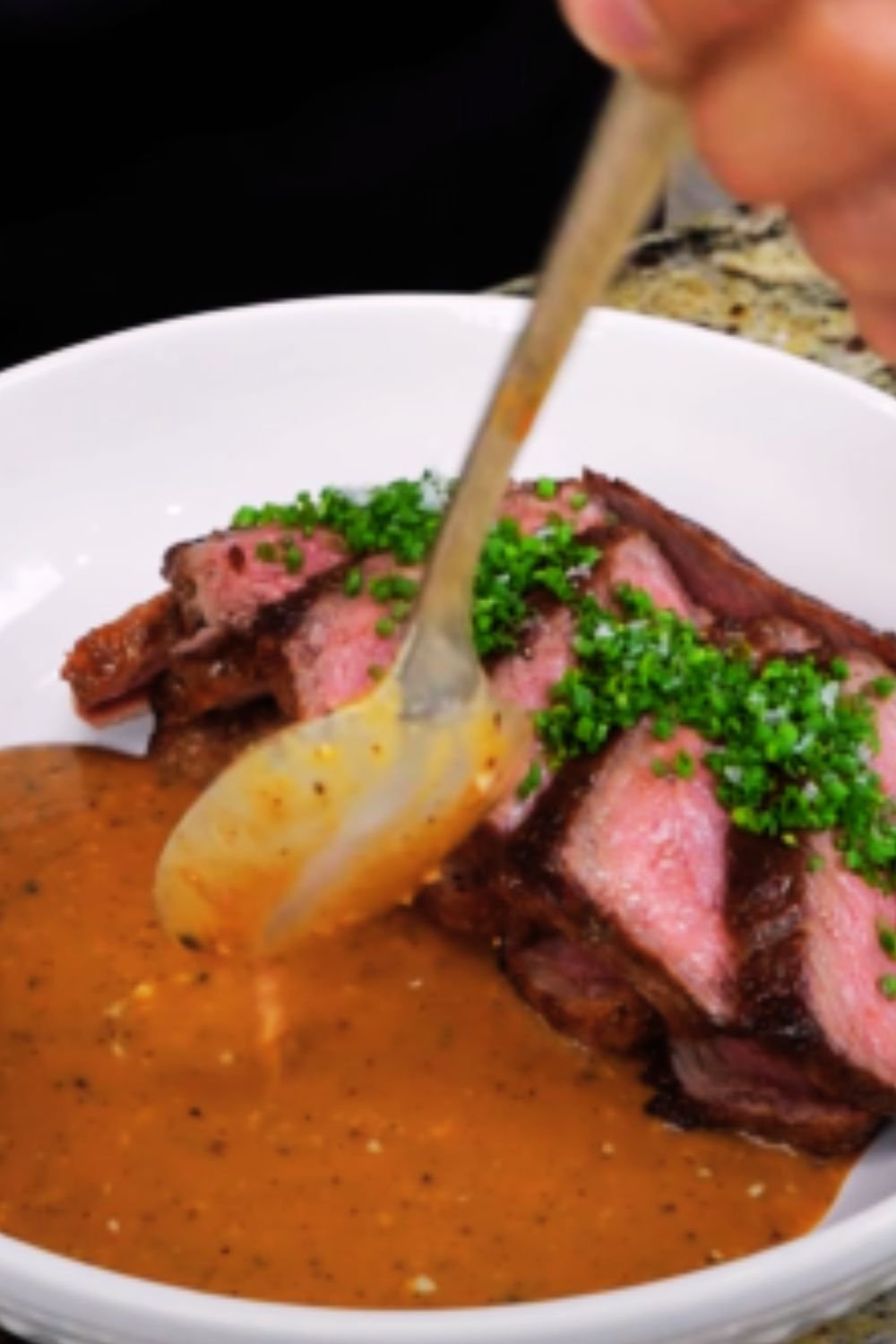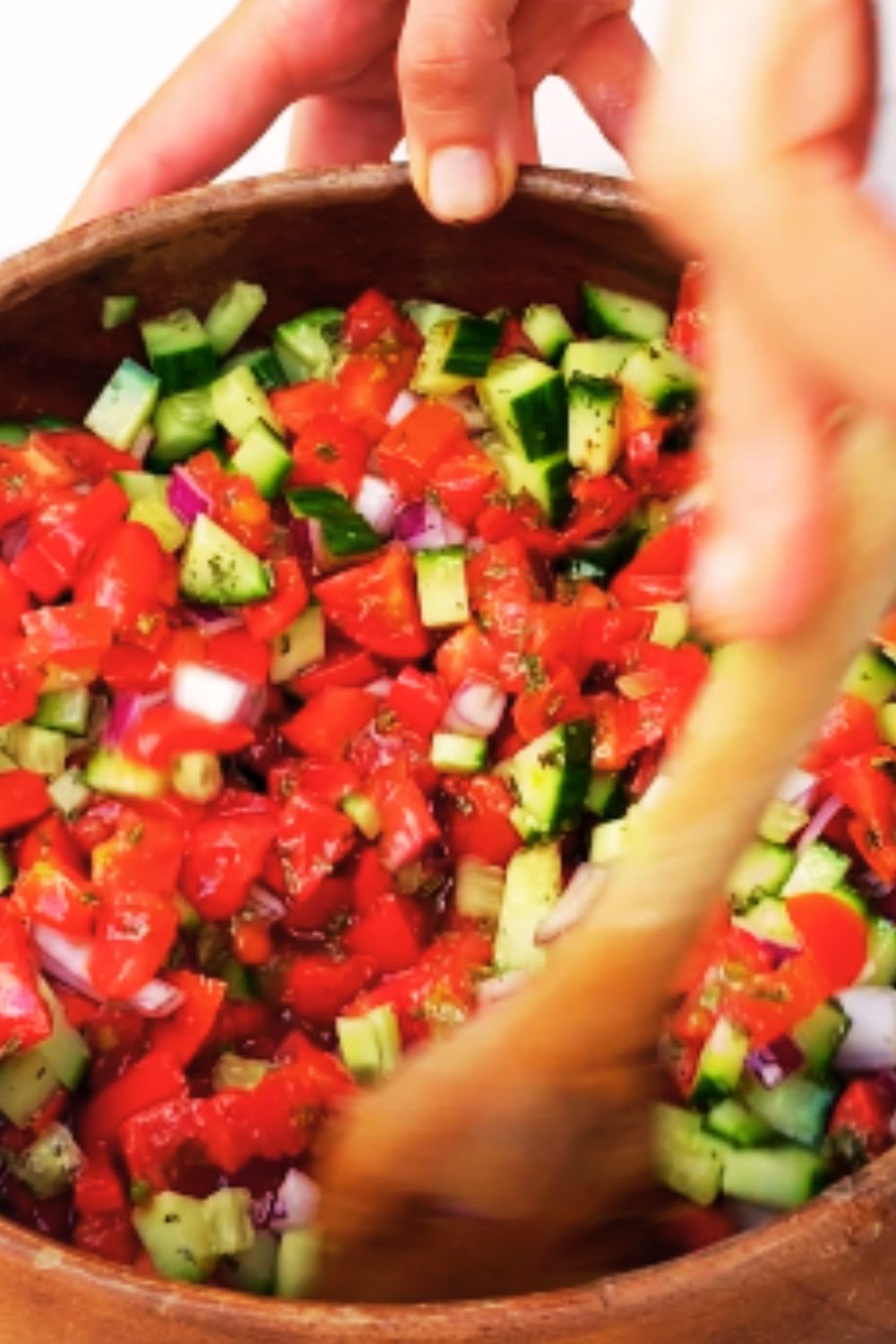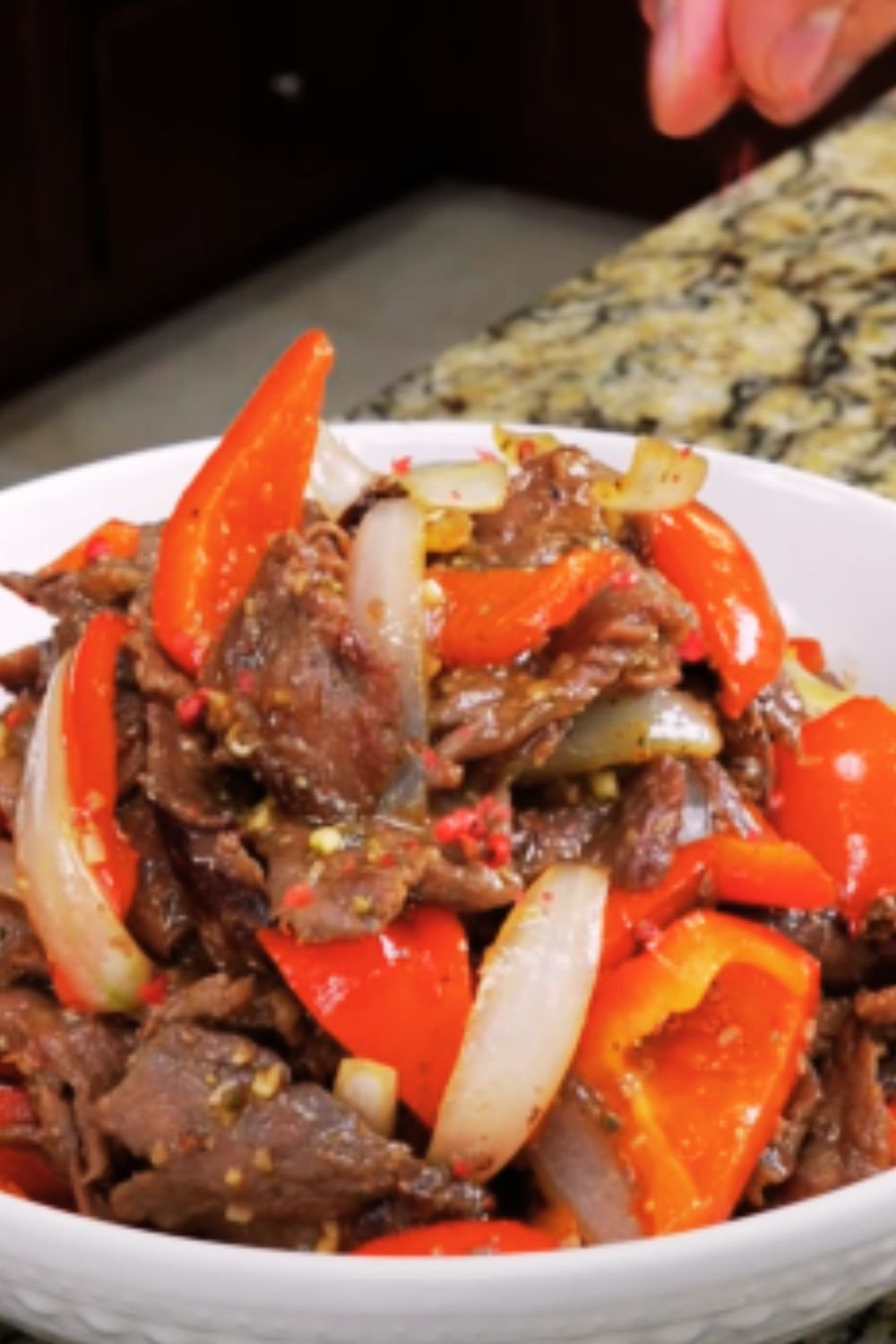There’s something undeniably satisfying about a perfectly cooked steak crowned with a rich, creamy peppercorn sauce. It’s one of those dishes that feels like a special occasion meal but requires surprisingly little effort to get right. As someone who has been cooking steaks for over fifteen years, I’ve learned that the secret lies not in complicated techniques, but in understanding a few fundamental principles.
When I first attempted this classic dish years ago, I was intimidated by the prospects of achieving that perfect medium-rare interior while also crafting a sauce that balances creaminess with the boldness of cracked peppercorns. But after countless attempts (and yes, a few failures), I’ve refined a method that delivers restaurant-quality results at home every single time.
In this guide, I’ll walk you through my foolproof approach to creating a memorable steak with peppercorn sauce. From selecting the right cut and mastering the cooking process to crafting a sauce that will make you want to lick the plate clean (no judgment here—I’ve done it myself when nobody’s looking), I’ve got you covered.
Choosing the Perfect Cut
The foundation of any great steak dish is, unsurprisingly, the steak itself. While you can apply this peppercorn sauce to virtually any cut, certain options work particularly well with this preparation.
Prime Candidates for Peppercorn Sauce:
- Ribeye – My personal favorite for this dish, ribeye offers abundant marbling that creates a juicy, flavorful experience that stands up beautifully to the peppery sauce.
- Strip Steak (New York Strip) – With its balanced fat content and firm texture, strip steak provides an excellent canvas for the sauce.
- Filet Mignon – The tender, lean nature of filet makes it a luxurious choice, with the peppercorn sauce adding the richness that this cut sometimes lacks on its own.
- Sirloin – A more economical option that still delivers excellent flavor, particularly when topped with this sauce.
Whatever cut you choose, aim for steaks that are at least 1 to 1.5 inches thick. Thinner steaks cook too quickly, making it challenging to achieve that perfect crust while maintaining a properly cooked interior.
Quality Indicators:
Look for:
- Good marbling (thin white streaks of fat throughout the meat)
- Bright red color (for beef that hasn’t been aged)
- Firm texture when gently pressed
- Dry surface (excessive moisture indicates poor storage)
I prefer to purchase steaks from a local butcher when possible. The quality tends to be higher, and I appreciate being able to ask questions about the source and aging process. That said, a good supermarket offering USDA Choice or Prime grades will also provide excellent results.
Ingredients for the Perfect Steak with Peppercorn Sauce
For the Steaks:
- 2 steaks (ribeye, strip, filet, or sirloin), 1 to 1.5 inches thick (about 8-10 oz each)
- 2 tbsp neutral oil with high smoke point (grapeseed, avocado, or canola)
- 2 tsp kosher salt
- 1 tbsp unsalted butter
- 2 garlic cloves, smashed
- 2-3 sprigs fresh thyme
For the Creamy Peppercorn Sauce:
- 3 tbsp whole black peppercorns
- 2 tbsp unsalted butter
- 1 medium shallot, finely diced (about 3 tbsp)
- 1/4 cup cognac or brandy (can substitute beef stock for non-alcoholic version)
- 1 cup heavy cream
- 1/2 cup beef stock
- 1 tsp Dijon mustard
- 1 tsp Worcestershire sauce
- 1/2 tsp kosher salt (adjust to taste)
Preparation Method
Preparing the Steaks
- Remove steaks from refrigerator at least 45 minutes before cooking to allow them to come to room temperature.
- Pat the steaks completely dry with paper towels. This is crucial for achieving a proper sear.
- Season generously on all sides with kosher salt.
- Crush the peppercorns for the sauce. I place them in a zip-top bag and crush them with a rolling pin or heavy pan. You want a mix of finely crushed and coarsely cracked pieces for texture variety. Set aside.
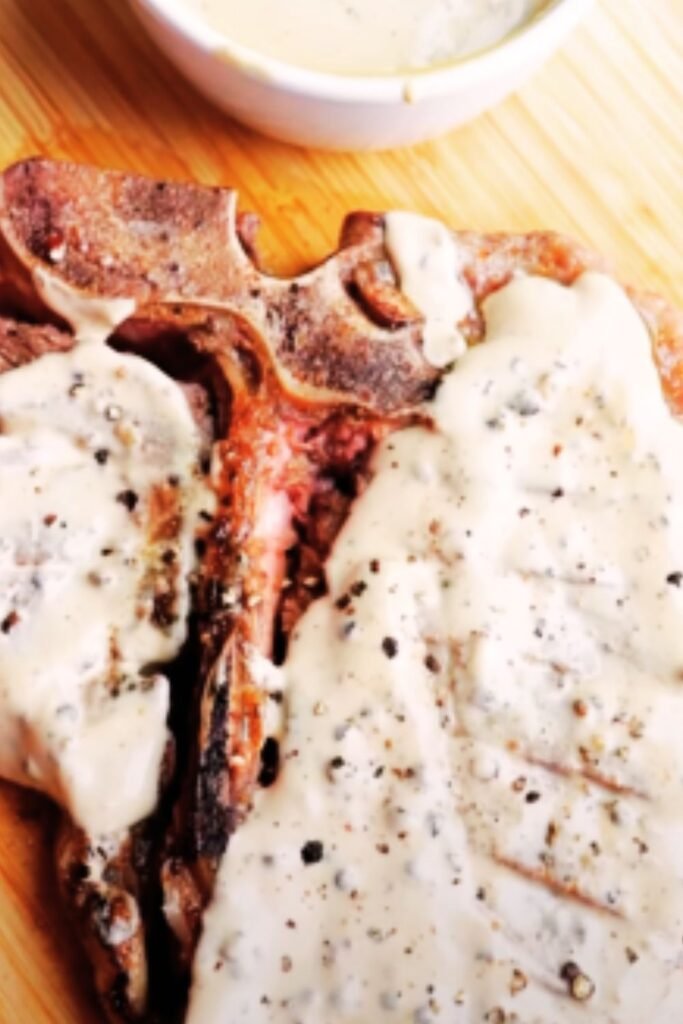
Cooking the Perfect Steak
- Heat a heavy-bottomed skillet (preferably cast iron) over high heat until it’s smoking hot.
- Add the oil to the pan and swirl to coat the surface.
- Carefully place the steaks in the pan, laying them away from you to prevent oil splatter.
- Cook without moving for about 3-4 minutes until a deep brown crust forms.
- Flip the steaks and add butter, garlic cloves, and thyme to the pan.
- Using a spoon, baste the steaks with the flavored butter for about 2-3 minutes.
- For medium-rare (internal temperature of 130-135°F), cook for approximately:
- 1-inch thick steaks: 3-4 minutes per side
- 1.5-inch thick steaks: 4-5 minutes per side
- Transfer steaks to a cutting board or warm plate to rest. Tent loosely with foil.
| Doneness | Internal Temperature | Approximate Cooking Time (per side for 1-inch steak) | Visual Cue | Texture Description |
|---|---|---|---|---|
| Rare | 120-125°F | 2-3 minutes | Red center, cool | Soft, spongy |
| Medium-Rare | 130-135°F | 3-4 minutes | Red center, warm | Tender, juicy |
| Medium | 140-145°F | 4-5 minutes | Pink center, hot | Slightly firm, juicy |
| Medium-Well | 150-155°F | 5-6 minutes | Slight pink, hot throughout | Firm with less juice |
| Well-Done | 160°F+ | 6+ minutes | No pink, hot throughout | Firm, minimal juice |
Note: Using a reliable meat thermometer is the most accurate way to achieve your desired doneness.
Crafting the Creamy Peppercorn Sauce
- Using the same pan you cooked the steaks in, reduce heat to medium.
- Add 2 tbsp butter and allow it to melt.
- Add the diced shallot and sauté until translucent, about 2-3 minutes.
- Add 2 tbsp of the crushed peppercorns to the pan and stir for 30 seconds to toast lightly.
- Carefully add the cognac or brandy (it may flame briefly if using a gas stove—this is normal).
- Using a wooden spoon, scrape up all the flavorful brown bits from the bottom of the pan.
- Allow the liquid to reduce by half, about 1-2 minutes.
- Add the beef stock and reduce again by half, about 3-4 minutes.
- Lower the heat and add the heavy cream, Dijon mustard, and Worcestershire sauce.
- Simmer gently for 5-7 minutes until the sauce thickens enough to coat the back of a spoon.
- Taste and adjust seasoning with salt if needed.
- Add the remaining crushed peppercorns for extra texture and visual appeal.
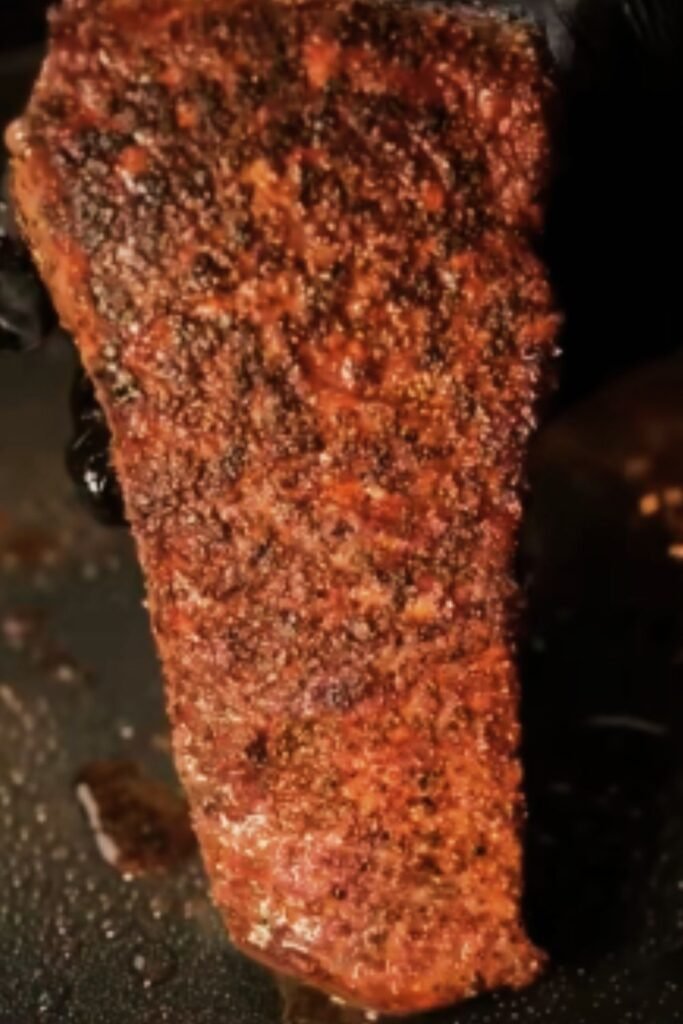
Serving Suggestions
To serve this spectacular dish, place your rested steak on a warmed plate and spoon the creamy peppercorn sauce generously over top or serve it alongside in a small sauce boat. The contrast between the crusty exterior of the steak and the velvety, peppery sauce creates a perfect harmony of textures and flavors.
I like to complement this rich dish with sides that provide balance:
- Crispy roasted potatoes – The crunchy exterior and fluffy interior make a perfect partner
- Steamed asparagus or green beans – The fresh, clean flavor cuts through the richness
- Simple mixed green salad with lemon vinaigrette – Adds brightness and acidity
- Sautéed mushrooms – Enhances the earthy qualities in the dish
For non-alcoholic beverage pairings, consider:
- Sparkling water with lemon
- Unsweetened iced tea
- Cranberry juice mixed with sparkling water
- A rich coffee to follow the meal
Common Mistakes to Avoid
In my years of perfecting this dish, I’ve made every possible mistake—so you don’t have to. Here are the pitfalls to watch out for:
- Not bringing steaks to room temperature: Cold steaks cook unevenly. Be patient and let them sit out.
- Skipping the pat-dry step: Moisture is the enemy of a good sear. Always thoroughly dry your steaks.
- Underseasoning: Salt is your friend. Season more generously than you think necessary.
- Overcrowding the pan: Cook steaks individually if needed to maintain proper temperature.
- Constantly flipping or moving the steak: Let it be to develop that beautiful crust.
- Skipping the resting period: This crucial step allows juices to redistribute.
- Boiling rather than simmering the sauce: Keep the heat gentle for a silky texture.
- Rushing the reduction process: Patience creates depth of flavor.
Variations to Explore
While the classic peppercorn sauce is hard to beat, I sometimes enjoy these variations:
Green Peppercorn Version
Substitute green peppercorns (packed in brine, drained) for a milder, brighter flavor that’s particularly good with veal steaks.
Blue Cheese Peppercorn Fusion
Add 2-3 tablespoons of crumbled blue cheese to the finished sauce off heat, stirring until just melted.
Mushroom Peppercorn Sauce
Add 8 oz of sliced mushrooms (cremini or button) after sautéing the shallots and before adding the peppercorns.
Whiskey Variation
Replace the cognac with a good quality bourbon or Scotch for a different aromatic profile.
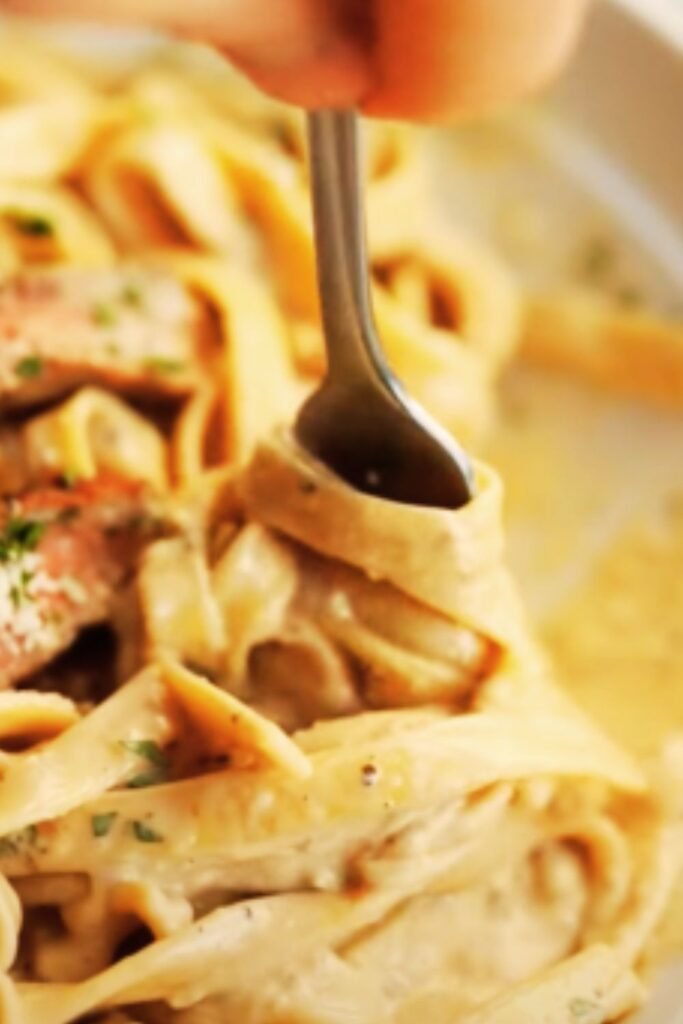
Adapting for Dietary Needs
This classic recipe can be modified to suit various dietary requirements:
Dairy-Free Version
- Replace heavy cream with full-fat coconut milk
- Use olive oil or dairy-free butter alternative instead of butter
- Add 1 tsp of cornstarch slurry (cornstarch mixed with cold water) to thicken if needed
Alcohol-Free Version
- Substitute beef stock for the cognac/brandy
- Add 1 tbsp of balsamic vinegar or red wine vinegar for acidity
Lower-Calorie Option
- Use half-and-half instead of heavy cream
- Reduce butter by half
- Serve sauce on the side for portion control
The Science Behind the Perfect Steak
Understanding the science helps achieve consistent results:
| Process | What’s Happening | Why It Matters |
|---|---|---|
| Room Temperature Rest | Proteins relax, moisture distributes evenly | Even cooking, better browning |
| Patting Dry | Removes surface moisture | Enables Maillard reaction for crust development |
| High Heat Searing | Maillard reaction creates hundreds of flavor compounds | Develops complex flavors and appealing crust |
| Butter Basting | Fat carries fat-soluble flavor compounds from herbs into meat | Enhances flavor profile |
| Resting Period | Muscle fibers relax, reabsorbing flavorful juices | Juicier steak, concentrated flavor |
| Deglazing Pan | Dissolves fond (browned bits) into sauce | Incorporates umami-rich flavors into sauce |
| Reducing Liquids | Evaporation concentrates flavors | Intensifies sauce flavor and improves texture |
Storing and Reheating Tips
While steak is best enjoyed fresh, sometimes leftovers are inevitable:
Storing:
- Refrigerate leftover steak and sauce separately in airtight containers
- Consume within 2-3 days for best quality
- Do not freeze the sauce (cream sauces tend to separate when frozen)
Reheating Steak:
- Bring steak to room temperature (about 30 minutes)
- Wrap loosely in foil with a teaspoon of beef stock or water
- Heat in 275°F oven for 15-20 minutes until warmed through
- Finish with a quick sear in a hot pan if desired
Reheating Sauce:
- Heat gently in a saucepan over low heat
- If separated, whisk vigorously to re-emulsify
- Add a splash of cream if needed to restore consistency
Frequently Asked Questions
Q: Can I use pre-ground pepper instead of crushing whole peppercorns?
While you can, I strongly recommend freshly crushed peppercorns. They provide superior flavor, aroma, and textural contrast that makes this sauce special. Pre-ground pepper loses its aromatic compounds quickly and won’t give you the same impact.
Q: My sauce is too thin. How can I thicken it?
Continue simmering gently to reduce further. For a quicker fix, mix 1 teaspoon of cornstarch with 1 tablespoon of cold water and whisk this slurry into the simmering sauce. Be careful not to add too much, as it can make the sauce gloppy rather than silky.
Q: Can I make the sauce ahead of time?
Yes, you can prepare the sauce up to 2 days ahead. Refrigerate in an airtight container and reheat gently on low heat, whisking to restore its consistency. You may need to add a splash of cream when reheating.
Q: What’s the best way to check steak doneness without cutting into it?
A digital instant-read thermometer is the most reliable method. Alternatively, you can use the finger test: Touch your thumb and index finger together and press the fleshy part of your thumb—that firmness approximates medium-rare. Middle finger gives you medium, ring finger for medium-well, and pinky for well-done.
Q: My sauce always breaks. What am I doing wrong?
The most common cause is heat that’s too high. Always reduce heat before adding cream and maintain a gentle simmer. Also, make sure your cream is at room temperature, not cold from the refrigerator, which can shock the sauce.
Q: I don’t have cognac. What else can I use?
Brandy is the closest substitute. Other options include bourbon, red wine, or beef stock with a tablespoon of balsamic vinegar for acidity and depth.
Q: How do I prevent tough, chewy steaks?
First, choose the right cut. Second, don’t overcook. Third, always slice against the grain when serving. Fourth, and perhaps most importantly, let the steak rest after cooking to allow muscle fibers to relax and reabsorb juices.
Q: My cast iron skillet smokes too much. What should I do?
Some smoke is inevitable when searing at high temperatures. Ensure proper ventilation by turning on your exhaust fan. Using an oil with a high smoke point helps reduce excessive smoking. You can also sear for slightly less time at a slightly lower temperature, though you’ll sacrifice some crust development.
Final Thoughts
Creating the perfect steak with creamy peppercorn sauce is less about fancy techniques and more about understanding fundamentals: quality ingredients, proper temperatures, and patience. The magic happens in that beautiful crust, the properly cooked interior, and a sauce that balances richness with the bold character of cracked peppercorns.
I still remember the first time I truly nailed this dish. The satisfaction of cutting into that perfectly pink center, watching the sauce mingle with the meat’s juices on the plate, and that first bite that combined the depth of the aged beef with the complex pepper sauce—it’s a culinary memory I treasure.
With the guidance I’ve shared here, I’m confident you’ll create your own perfect version. Trust the process, embrace the science, and don’t be afraid to adjust to your personal preferences. After all, cooking is both an art and a science, with plenty of room for your unique expression.
The best part? Once you’ve mastered these techniques, they’ll serve you well beyond this specific dish. The principles of proper searing, sauce building, and temperature control form the foundation of countless other culinary creations.
So fire up that skillet, crush those peppercorns, and prepare for a restaurant-quality experience right in your own kitchen. Your perfect steak with creamy peppercorn sauce awaits!

